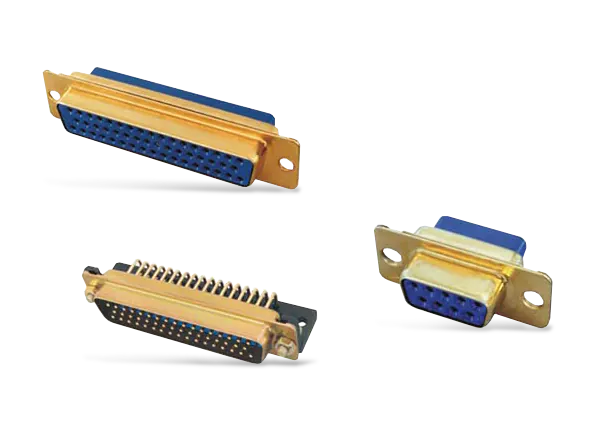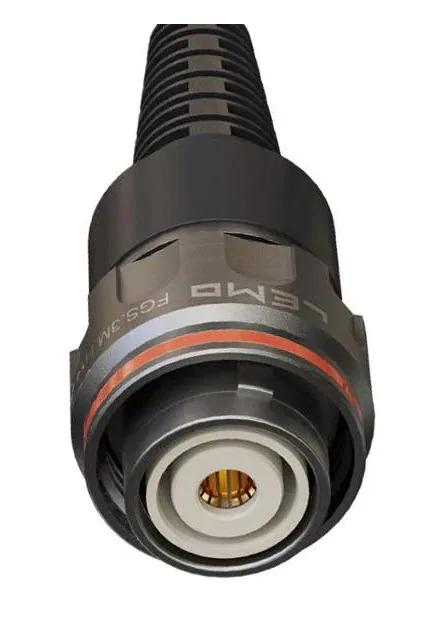Connectors
Assessing Whether Commercial Alternatives to MIL-Spec Connectors Are Right for Your Design
Designers often use high reliability, often shortened in conversation to “Hi-Rel," to describe products that are designed to deliver excellent performance in demanding, mission-critical applications. Hi-Rel is often another way of describing military and aerospace products. It is sometimes assumed that products approved to a military standard are naturally superior to other products that are not. However, it may be time to stop thinking of high reliability and start talking about appropriate reliability.
High Performance
One of the most essential characteristics of any connector is defining the number of mating cycles. A mating cycle is the act of mating and un-mating a connector once. Most manufacturers publish a minimum mating cycle count in their specifications, as it indicates how long a connector will last. Connecting and reconnecting will have a physical effect on the electrical contacts, which, in turn, will affect their electrical performance.
The goal of every connector manufacturer is to keep the contact resistance—the extent to which the connector contacts hinder the flow of an electric current—to a minimum. Testing a connector for its number of mating cycles measures its contact resistance.
A military specification connector—the archetypal Hi-Rel solution—might have a published performance of 500 or even 1000 mating cycles. But this is not the high point of the connector industry. The humble USB connector that has been with us for nearly three decades is designed to provide up to 5000 mating cycles, and there are even versions available that will provide a service life of 20,000 mating cycles or more.
Commercial Alternatives
There will always be the need to choose Hi-Rel connectors for specific designs. Connector performance is not purely governed by mating cycles; the environment in which the connector will be used must also be considered. We regularly discuss IP ratings, shock and vibration, and resistance to electromagnetic interference (EMI). The need to meet some or even all of these conditions will have an enormous effect on the design of any connector.
However, assuming that a connector with a MIL part number is the only way to obtain this performance is wrong. Almost all manufacturers who make products conforming to a MIL standard also make the same connector under their part number. These are usually made on the same production line, using the same materials, and delivering the same performance. For example, the ever-popular D38999 Series III circular connector is available from Amphenol as the TV, Souriau as the 8D, and ITT Cannon as the KJA families.
The difference will be in detail. A MIL-DTL part number might be subject to additional inspection or be supplied with a spare contact and removal tool. However, unless these are vital for your design, choosing the manufacturer's part number could significantly reduce costs. The same is true for D-Sub connectors sold as M24308 and micro-D connectors as M83513 (Figure 1). Find out what the manufacturer calls their equivalent product and get ready to save money.

Figure 1: Amphenol Pcd M2000 D-Sub Connectors are military-qualified and meet MIL-DTL-24308 requirements. (Source: Mouser Electronics)
Another vital thing to remember is that connectors do not have to be designed to a military specification to be capable of military-grade performance. Swiss manufacturer LEMO has been making connectors for 80 years using their innovative push-pull locking system, which provides superior ease of use and reliability. Many of their connectors have been subjected to a range of military tests which prove their performance in certain applications, the most aggressive of which are the gunfire vibration standards. Meeting these standards for shock and vibration makes them suitable for a wide range of uses. LEMO connectors such as the M Series have proven time and again their suitability for use in tough conditions such as the motorsport industry (Figure 2).

Figure 2: Circular Push Pull Connectors M Series High Power Plug 8AWG. (Source: Mouser Electronics)
Testing for Tough Conditions
Other connector manufacturers go above and beyond published standards to provide their customers peace of mind. An excellent example is US manufacturer Samtec which developed the Severe Environment Testing program. Samtec understands that the growth of high-speed electronics into almost every industry segment will expose standard commercial connectors to harsh conditions. The SET program takes traditional families of connectors such as the SEARAY™ and mPower™ and subjects them to a battery of tests that goes far beyond the standards of “commercial” products. In this way, designers are provided with cutting-edge board-to-board connectors that can withstand the rigors of demanding applications.
Conclusion
High-reliability connectors represent the gold standard of the interconnection industry. Designed to work in applications where failure is not an option, they provide the superior performance and reliability vital to many designs. But this comes with a price.
The next time you need a solution for a demanding requirement, ask whether a high-reliability connector is needed at all. The connector industry is enormous and diverse, and a little time spent understanding how a particular product will perform could save you a lot of money in the future.